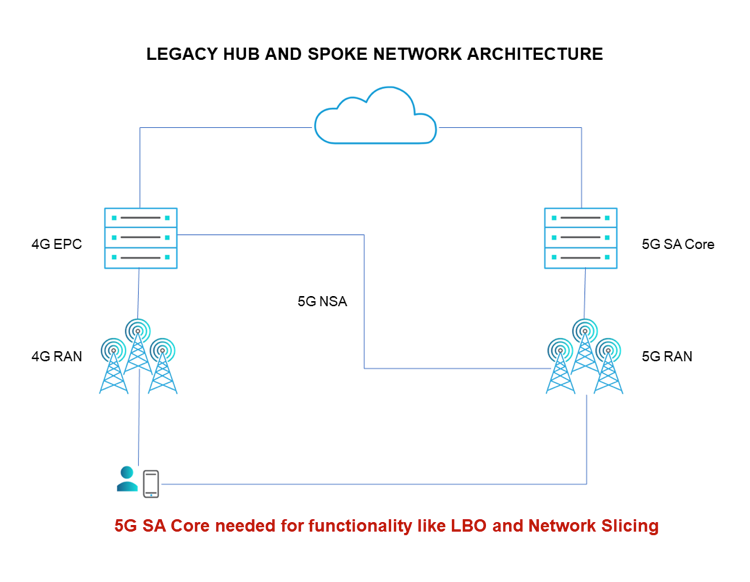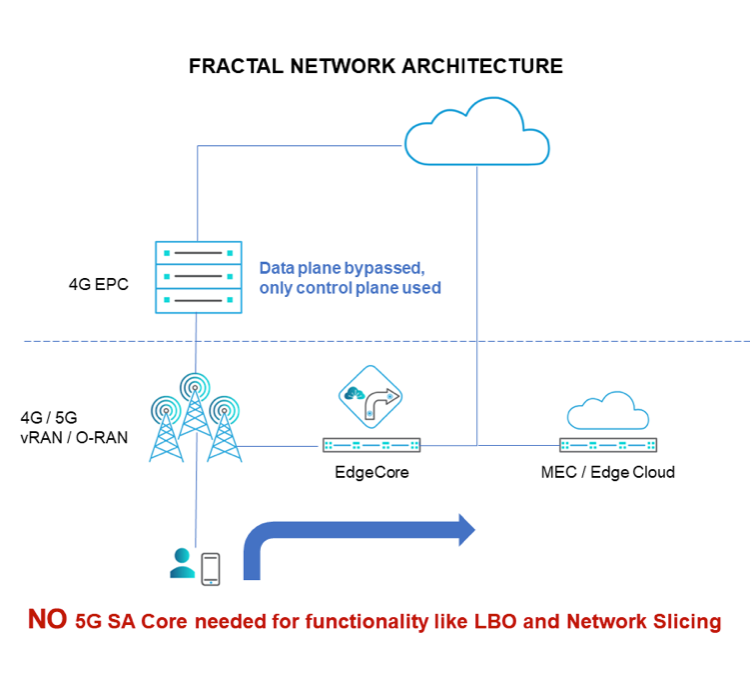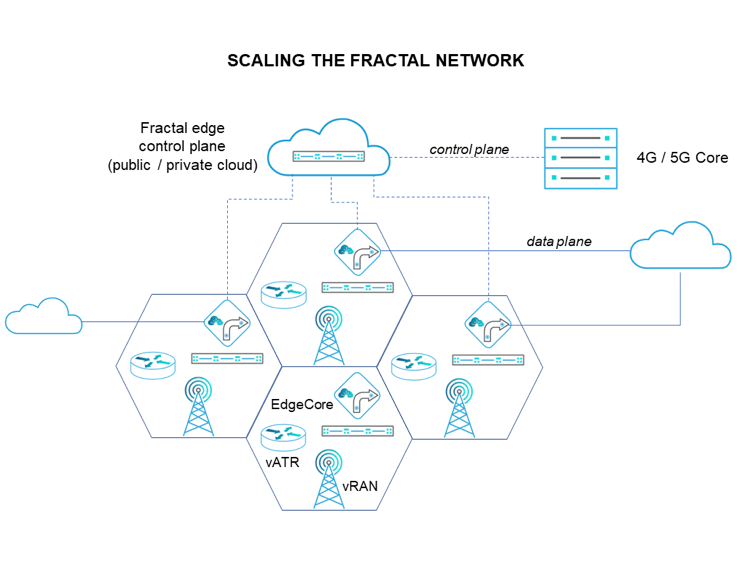Full 5G standalone is arriving and investing in traditional, “hub and spoke” network topologies is not the way for operators to leverage the advantages it can deliver. Instead, the focus must now shift elsewhere: to augmenting the edge.
The 5G investment dilemma
5G promises to deliver wider bandwidths ranging from the sub 3GHZ used in 4G to 100GHZ and beyond. This means extreme capacity, multi Gbps transport, low latency, and speeds that are 10-50 times that of 4G to meet the demands of increasingly popular use cases like vehicle-to-anything, immersive virtual reality gaming, and telesurgery.
Even as mobile operators invest in densifying their 5G RAN infrastructure with more macro and micro cells to expand capacity and coverage, the massive investments needed today support use cases that will mature over a 5-to-10-year (in some cases longer) period poses a huge dilemma to operators. And this dilemma has kept most operators globally from deploying full standalone 5G networks.
Delaying the deployment of full 5G networks can in turn delay the monetization of 5G networks, creating a continuing vicious cycle of delays. To break this vicious cycle, operators need to rethink the way they scale their networks.
Modernizing the network: Breaking the tyranny of Hub-and-Spoke
The conventional approach to network architecture build (pre-5G) has been the "Spoke" design, where traffic aggregated from distributed access networks is hauled to central core site before breaking out to the Internet.
The Hub-and-Spoke architecture – with the centralized core infrastructure being the hub and the layered backhaul infrastructure acting as the spokes connecting to the distributed RAN infrastructure, poses numerous challenges for 5G including:
- Significant backhaul costs to transport traffic to central sites
- Massive capital outlay for upgrading core infrastructure as traffic volume grows
- Inefficient utilization of RAN infrastructure due to the lack of intelligence and control
at the edge
The Hub-and-Spoke architecture served us well from its origins in legacy analog voice networks which required switching exchanges, through to 3G and 4G. The question now is whether continued investment in Hub and Spoke is the right approach for deploying and scaling 5G. The answer is almost certainly a resounding “NO”.
Realizing ubiquitous 5G with an edge-centric “Fractal” architecture
With the era of voice and early data networks behind us and as we venture into the age of all IP, cloud-native networks and expanding fiber connectivity (even in remote regions), there is little reason to continue hauling traffic to a central location before offloading to the Internet.
To truly realize the promise of 5G without breaking the bank, telco infrastructure needs to evolve and expand at the edge while building on existing infrastructure investments. The first step in this evolution is to bring some essential functions of the “Hub” – the centralized packet core, to the edge. This “Edge Core” is a scaled down and highly distributed function collocated with the RAN, which can steer traffic out from the RAN (Local Break Out) to the Internet while still anchoring user sessions to the existing centralized 4G or 5G NSA core for mobility, metering, policy decisions etc.
A cloud-native Edge Core, packaged with a cloud-native RAN and software-defined access routing functions together constitute an Edge Network Fractal which can scale at a fraction of the cost of scaling the legacy hub-and-spoke infrastructure.
Benefits of the Fractal Architecture
The centrepiece of the fractal architecture is the Edge Core, which by virtue of being collocated with the RAN can deliver the following key benefits:
- The ability to scale core capacity fractionally at the edge vs the massive investments
needed to scale the centralized core.
- The ability to offer 5G capabilities like Local Break Out (LBO) and network slicing
with the Edge Core, without the need for a 5G SA Core.
- The ability to perform closed-loop optimization of the RAN (by the Edge Core) to
maximize spectral efficiency and minimize RAN cost/gpbs.
- The ability to provision and manage services (e.g., private networks, business
connectivity, QoE, macros and micro network slicing, VAS etc.) at the edge without
the need for additional networking infrastructure.
- Significant backhaul cost savings as traffic can now be offloaded to the Internet from
the RAN
The beginning of a new growth and innovation journey
This blog aims to start a conversation that identifies the edge, rather than legacy topologies, as a more sensible location for investment in both the short and longer-term futures of network infrastructure. If you’d like to discuss the subject in more detail (and there’s a lot more to talk about), we’d be delighted to hear from you. Please click the link HERE to arrange a follow-up conversation.


